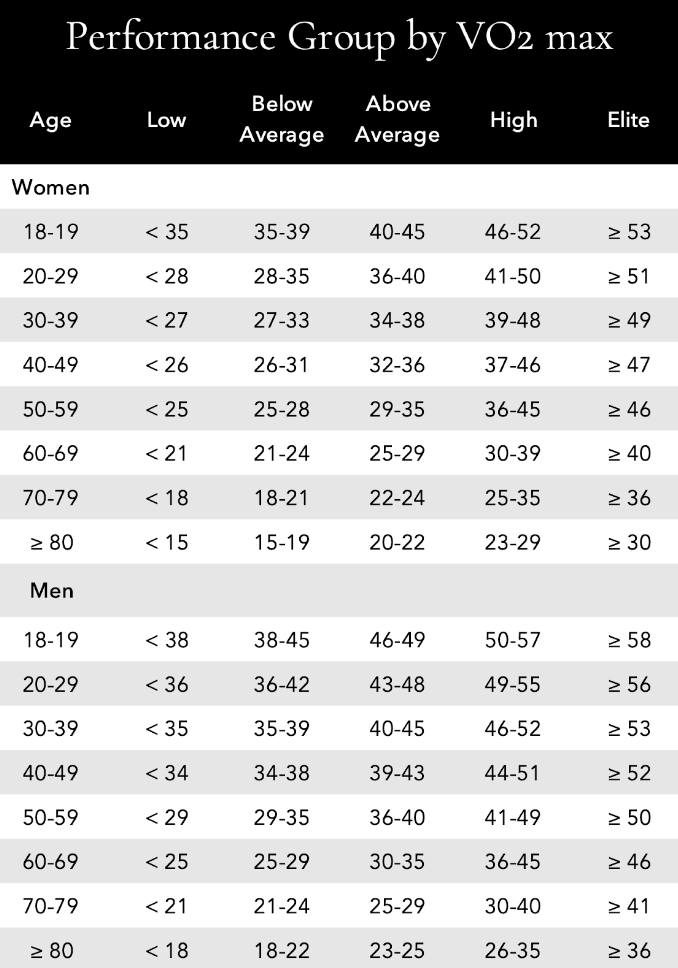Re-Introducing the Full Health and Performance Newsletter - Issue #1 Why VO2max Is the Fountain of Youth
There’s a kind of quiet power in doing something hard—not for applause, but because your future self will thank you for it. This is especially true with exercise and training.
Whether you're training for competition, high pressure work or just to keep up with your kids without needing a lie-down afterwards, the best foundation you can build is your cardiorespiratory fitness. It’s the engine that supports nearly everything else—speed, stamina, energy, and even mental resilience.
And the good news? Improving it is within reach for everyone.
In the this issue of the Full Health and Performance newsletter (formerly known as Full Health Friday), we will dig back into the what, why and how of cardiorespiratory fitness…. after I re-introduce myself and what this newsletter is all about.
👥 Who I am & What This Newsletter Is About
Hi, I’m Coach Simon Dannapfel. I’ve spent over 20 years helping people—from aspiring elite athletes to high-performing parents—improve how they feel, move, and live.
I hold a Master’s degree in Sport and Exercise Science, along with advanced certifications in nutrition, mobility, and high-performance coaching. My work combines evidence-based strategies with a deep understanding of what actually works in the real world—when life is full, stress is high, and time is short.
This newsletter is a practical, useful, and science-grounded way for me to share what I’m learning, testing, and coaching— so you can apply it in your own life or sport.
In each edition we will cover ideas, insights and inspiration to help you live, train, or recover better.
Welcome to issue #1, lets get started.
🧠 Quote For Reflection
"The only victory that counts is the one over yourself.”
— Jesse Owens
🛠️ VO2max: The Overlooked Powerhouse of Health & Performance
When we talk about cardiorespiratory fitness, VO2max is the first term that will come up.
VO2max is the maximum oxygen your body can use when pushed to the limit either during high-intensity exercise, performance and or challenging task.
It’s not just a number—it shows your capacity to perform, to recover, and to thrive under pressure…and ability to live a long and healthy life.
🧬 Why VO2max and cardiorespiratory fitness matters for everyone: As you can see in the graph below, research shows that those with higher VO2 max levels have a significantly lower risk of death from all-causes, with the fittest individuals experiencing up to a five-fold reduction in risk of death compared to the least fit (Mandsager et al., 2018; Kokkinos et al., 2022).
Even improving from the lowest level of fitness to moderate can afford you a 50% risk reduction, demonstrating how powerful it is:
💥 How to Improve VO2max
Start with Zone 2 Training (easy effort, steady breathing pace where you can keep up a conversation with someone if you had to):
Start building from where you are now and aim for 3+ hours per week to build your aerobic base and supports mitochondrial health.
Think of this as the long game: low-stress but high return.
Add Intervals strategically (one to two times per week), choosing from:
Short maximum effort intervals (e.g., 30s on / 30s off × 5 rounds)
Longer intervals like 4 × 4 mins at 90–95% effort with equal rest
The mix of volume (Zone 2) and intensity (intervals) works for both gym-goers working on health and athletes working on their performance.
💥 Finding your VO2max level
To find out your VO2max level you can:
Do a laboratory based VO2max test for the highest accuracy and level of information - best suited for athletes or those aiming for an athletic goal that would benefit from deeper insights.
Do a maximum intensity test to estimate your VO2max based off research calculated equations e.g. Cooper test running test. This is a good budget friendly option for both athletes and regular gym-goers who are not beginners.
Do a sub-maximal test to estimate your VO2max based off research calculated equations. e.g. Astrand bike test. This is a good option for those starting out on their fitness journey or coming back from illness or injury who are not yet ready for a maximal effort test.
Once you have your VO2max number, you can compare it to the chart below to find out your level.
📣 Want help finding your VO2max or interested in more information?
👉 Get in touch via my contact page and lets talk!
Wishing you a happy and healthy month ahead,
Coach Simon Dannapfel
References:
- Kokkinos, P., Faselis, C., Myers, J., Panagiotakos, D. B., Doumas, M., Pittaras, A., & Sui, X. (2022). Cardiorespiratory fitness and incidence of chronic kidney disease and mortality in the elderly. European Journal of Preventive Cardiology, 29(5), 773-782.
- Helgerud, J., Høydal, K., Wang, E., Karlsen, T., Berg, P., Bjerkaas, M., Simonsen, T., Helgesen, C., Hjorth, N., Bach, R., & Hoff, J. (2007). Aerobic High-Intensity Intervals Improve VO2max More Than Moderate Training. Medicine & Science in Sports & Exercise, 39(4), 665. https://doi.org/10.1249/mss.0b013e3180304570
- Lipman, S., Birkenbach, K., & Attia, P. (2024, April 3). The [almost] unbelievable effects of a high maximal aerobic capacity on all-cause mortality. Peter Attia, M.D. https://peterattiamd.com/all-things-vo2-max/
- Mandsager, K., Harb, S., Cremer, P., Phelan, D., Nissen, S. E., & Jaber, W. (2018). Association of Cardiorespiratory Fitness With Long-term Mortality Among Adults Undergoing Exercise Treadmill Testing. JAMA Network Open, 1(6), e183605.
- Wen, D., Utesch, T., Wu, J., Robertson, S., Liu, J., Hu, G., & Chen, H. (2019). Effects of different protocols of high intensity interval training for VO2max improvements in adults: A meta-analysis of randomised controlled trials. Journal of Science and Medicine in Sport, 22(8), 941–947. https://doi.org/10.1016/j.jsams.2019.01.013


